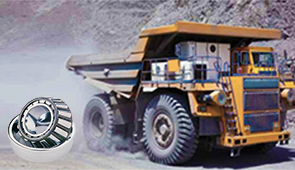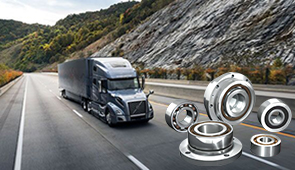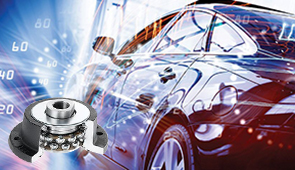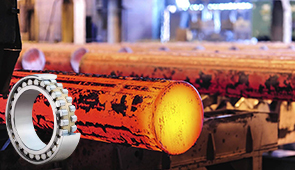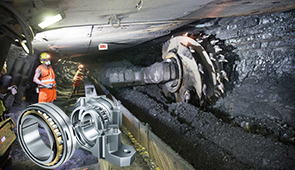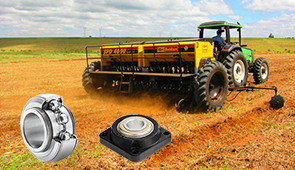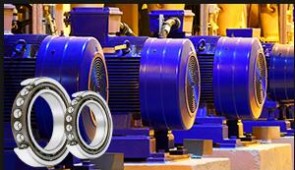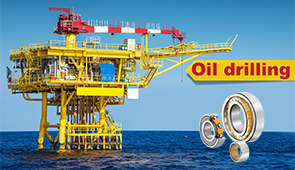NSK vs Timken: A Comprehensive Comparison of Bearing Durability and Performance
When it comes to industrial machinery, the performance and durability of bearings are indispensable for ensuring efficiency in operations. Becoming two very highly rated and renowned names in bearing industries, NSK and Timken have long been providing quality solutions for several applications. But how do these two giants compare in terms of durability, telecom, and overall performance? The article herein will attempt to provide deep insights into both NSK and Timken and shed light on what differentiates them so you can make the correct choice. Whether you supply components for heavy machinery or strive to optimize precision equipment, an understanding of these two major brands is crucial if your main concern is longevity.
Introduction to Bearings
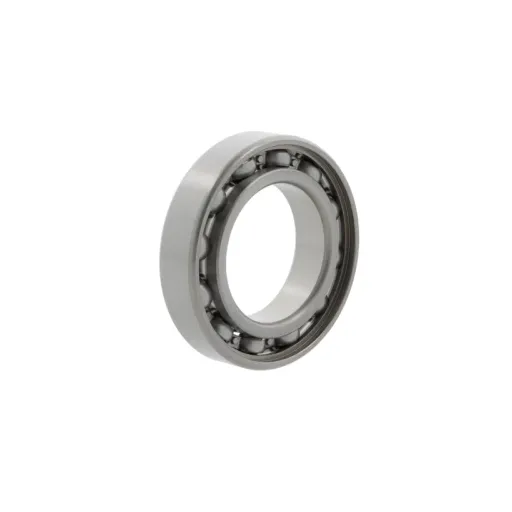
What Are Bearings?
Bearings are machine components that help in friction reduction between moving parts. They allow motion and facilitate an intended movement. Bearings allow smooth rotations and linear travels of different components through contact and wear reduction-to ensure that machines with a given process function smoothly and with utmost precision. Bearings are being utilized in diverse fields: Heavy machinery, engineering, and automotive industries-all are dependent on bearings to maintain the quality and longevity of mechanical assemblies.
The movement occurs between constrained components, passing loads from one component to another. Loads handled by a bearing may be radial, axial, or combined, depending upon its type and design. Major bearing types are ball bearings, roller bearings, and thrust bearings, each designed for specific load and performance requirements. For example, ball bearings suit lighter loads and high-speed rotations, while roller bearings can withstand heavier loads owing to their larger contact area.
Bearings are very much important as their failure may well initiate serious operational problems or downing of machinery. Bearings help systems to run with less energy, while also reducing maintenance costs as they prevent wear from happening on the surface. Bearings must be selected, installed, and maintained properly in order to live up to expectations and extend machinery life.
Importance of Quality in Bearings
For smooth functioning and long life of any machine and equipment, the bearing level of quality is a very significant factor. Basically, high-quality bearings are durable and resist the premature wearing out of bearings and spoilage due to friction. This kind of reliability reduces unanticipated downtime and helps the system perform effectively all the time, thus saving time and reducing operational costs. Lower-grade bearings are inclined to defects and immediate failures, thereby increasing the cost of repair and possibly damaging the systems they support.
Working with good bearings increases the efficiency of energy as well. High precision manufactured bearings reduce friction, which limits the actual energy necessary for the system to perform optimally. This, in turn, reduces energy costs while also having the positive effect of reducing wastage of energy and thus lessening environmental degradation. Bearing manufacturers maintain strict quality standards usually to produce bearings that deliver performance as expected by the bearing users in demanding applications and environments.
Comparison aside, the same concept applies to class installation and maintenance procedures; otherwise, even the most technically sound bearings can be worth nothing under the means of misuse or negligence. Bearing life is further extended by regular monitoring for wear signs and lubrication requirements, hence a good bearing warrants care throughout every aspect of its life cycle.
Overview of NSK and Timken
NSK and Timken are two big international brands that are known for innovation, quality, and reliability. Established in 1916, NSK is a Japanese company that manufactures all sorts of bearings, from ball and roller types to precision machinery and automotive components. NSK is into advanced technology and sustainability, developing products according to changing industrial needs while being considerate of the environment.
Timken, founded in the year 1899 in America, has been known to supply engineered bearings and power transmission solutions of the highest quality. The brand is mostly known for tapered roller bearings, which are made for heavy loads and have high durability in adverse conditions. Timken emphasizes research and development that yield innovation in solutions for industries such as automotive, aerospace, and energy.
Both NSK and Timken pay tremendous attention to customer satisfaction, by providing quality products and services to their customers. While NSK uses its expertise in precision engineering to cater to a large market, Timken applies its expertise to the more heavy and robust end of the applications. Both companies have gained worldwide respect through never-ending investment in advancements and quality standards, cementing their reputations as industry movers.
Product Quality and Performance
NSK Bearings: Key Features
Higher grades of precision are manufactured in NSK Bearings, earning a reputation for the highest quality and innovative company in the world. A further important feature of NSK bearings is their excellent lifetime and operating efficiency, NSK uses advanced materials and heat treatment processes, which enable its bearings to withstand harsh conditions, which may include extremes of temperature, high-speed operations, and heavy-load environments. This translates into longer service life with minimum downtime, thus serving the end users in a cost-effective and reliable manner in different sectors.
Another major feature offered by NSK bearings is their precision so that they can perform uniformly in various applications. They are designed mainly to reduce friction and conserve energy in doing so. NSK incorporates features such as optimized geometries and specially developed lubrication technologies so that these bearings operate smoothly with minimum wear. High-speed demands are made under high-stress conditions in industries like automotive or aerospace; NSK bearings remain stable and accurate.
Innovating NSK produces application-specific bearings addressed at particular challenges of various sectors; for instance, their ball bearings, roller bearings, and linear motion products serve the automotive, machinery, robotics, and renewable energy industries. NSK also considers sustainability by producing bearings that conserve energy, promoting green operations for which businesses seek performance and reliability that NSK bearings cannot delay in providing.
Timken Bearings: Key Features
Known for their durability and ingenuity, Timken bearings have been trusted throughout numerous industries. Designing and manufacturing tapered roller bearings, spherical roller bearings, cylindrical roller bearings, and bearing assemblies specific to certain industrial applications, the products are designed to withstand high loads, extreme temperatures, and hostile environments, ensuring their dependable performance in strenuous industries such as agriculture, automotive, construction, and aerospace.
What distinguishes Timken bearings is their accurate design, which consequently reduces friction and improves efficiency and the lifespan of the machinery. Timken also optimizes performance and lowers maintenance costs by using advanced materials and coatings, including wear-resistant alloys and corrosion-resistant surfaces. Many of their products also promote easy installation, thus bettering operational efficiency for companies.
Timken remains committed to innovation, with a focus on sustainability and innovative engineering solutions. Timken remains leader in creating bearings that reduce energy demand and enhance load-carrying capacity by continuously investing in R&D and using data-driven approaches and the newest technologies. Timken is thus a forefront in providing cutting-edge solutions to meet modern industry’s evolving requirements to enhance productivity while sustainability.
Comparative Analysis of Quality
Meanwhile, perhaps a Timken bearing offers superior durability, superior load capacity, or perhaps greater precision; on the other hand, an NSK bearing is preferable with regard to friction, the number of applications, and energy conservation.
|
Aspect |
Timken |
NSK |
|---|---|---|
|
Strength |
Exceptional |
Outstanding |
|
Accuracy |
High |
Exceptional |
|
Capacity |
Superior |
Impressive |
|
Smoothness |
Minimized |
Reduced |
|
Flexibility |
Diverse |
Wide-ranging |
|
Efficiency |
Efficient |
Optimized |
|
Tailoring |
Available |
Available |
|
Upkeep |
Easy |
Hassle-free |
Pricing and Value for Money
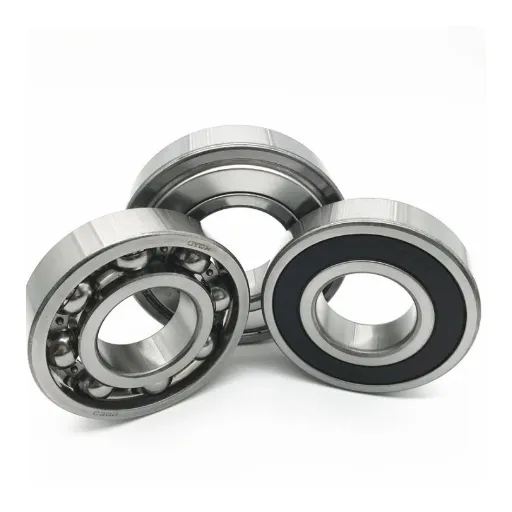
Cost Comparison: NSK vs Timken
Timken bearings are costlier due to their durability and load capacity, whereas NSK bearings give you the most cost-effective solutions in respect of energy efficiency and versatility.
|
Aspect |
Timken |
NSK |
|---|---|---|
|
Price |
Higher |
Moderate |
|
Durability |
Exceptional |
Outstanding |
|
Efficiency |
Efficient |
Optimized |
|
Versatility |
Diverse |
Wide-ranging |
|
Value |
High |
Cost-effective |
|
Load |
Superior |
Impressive |
|
Friction |
Minimized |
Reduced |
|
Maintenance |
Easy |
Hassle-free |
Evaluating Long-Term Value
In determining the long-term value of bearings, it is essential to factor not just initial cost but also performance, durability, and efficiency through the years. In this context, Timken bearings with higher capacity to withstand loads and with less friction work best in highly demanding applications, with a high level of assurance. This makes the investment well worth it where industrial processes need strength and durability in a short time. NSK bearings seem to offer more the cost-effective counterparts, with friction reduction and optimization of energy efficiency, for those conditions where energy savings and versatility are the big issues-a characteristic that keeps bearing NSK as the preferred brand for any firm wanting to pursue sustainable development without compromising quality.
However, while evaluating the bearing’s long-term cost, maintenance also takes center stage. Timken’s design ensures less downtime for general maintenance with very few interruptions, keeping things virtuous. NSK bearings, meanwhile, follow a design philosophy that makes for pretty easy maintenance, reducing the length of time and resources to maintain them. Both brands focus on reliability and ease of operation but address slightly different maintenance concerns depending on the requirements of the respective use case. This leaves operators free to select the brand that most closely fits their operations and long-term goals-whether that is focused on maximizing uptime or solving with long-term cost efficiency.
Combining cutting-edge technological advancements, Timken and NSK bearings push forward on the frontier of material science and design. Such developments, therefore, ensure that each bearing truly delivers on promises of long-lasting performance and energy efficiency. Coupled with data-driven decision tools and intelligence from thorough research, one can analyze an application more precisely, thus stepping aside from the typical hurdles of relying strictly on answers generated by generic searches. Such set of technologies combined with tangible evidence from the bearing’s performance lets an industry make concrete operational productivity choices and reduce costs on a long-term perspective.
Industry-Specific Pricing Considerations
Understanding the industry’s pricing specifics, essential to any business seeking to minimize its operational expenses and remain competitive. Price in any sector is influenced by many factors, including raw material price, labor availability, production efficiency, and external economic conditions. All these factors combine to in the formation of a price system that necessarily affects production capacity and market positioning. This means that everyone in the industry confronted with sudden price changes in the raw materials, e.g., oil or metals, should obviously be receptive to price changes.
Understanding modern analytics in data and real-time information, for example, accessible through Google Search, gives companies a nectar of knowledge on price trends and competitor strategies. Focusing on data and not on phrase-based searches will help organizations get around generic information and glean insights worthy of action. Companies that use these tools to analyze trends, spot saving opportunities, and implement demand-driven price models will achieve savings and remain flexible in meeting market demands.
Also, this approach combined avoids the usual restrictions often faced in traditional information gathering processes. Integrating research-supported data and performance measures with generic searches allows a comparative study of pricing dynamics, which not only facilitates an improved pricing strategy but also aids businesses in foreseeing likely risks, formulation, and optimization of resource provision capabilities with their pricing decisions in portfolios meant for long-term growth.
Industry Applications and Suitability
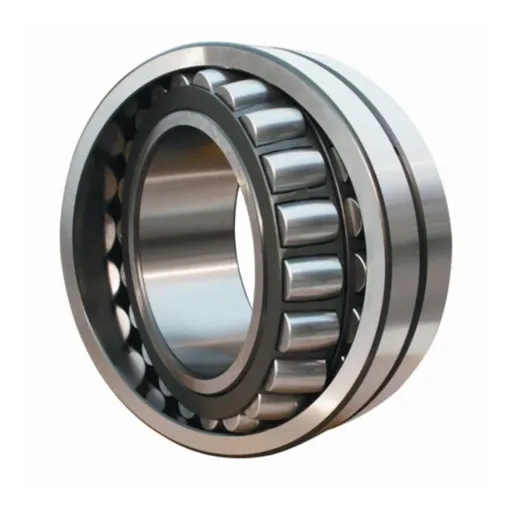
Applications for NSK Bearings
NSK bearings are noted for their precision, strength, and flexibility, allowing them to cater to multiple industrial requirements. Provided are five major uses in which NSK bearings play a decisive role:
- Automobile:NSK bearings find applications in various parts of vehicles, including wheel, transmission, and electric motor bearings. These high-quality bearings are notable for their ability to perform under extreme temperatures and adverse conditions to ensure smooth operations and higher vehicle efficiency.
- Industrial Machinery:Numerous industrial equipment needs NSK bearings to operate smoothly. Bearings are applied to motors, pumps, and compressors, to assure reliability and long operational life of the equipment even in harsh working conditions.
- Aeronautical Engineering:In aeronautical applications, precision, and reliability are provided for by NSK bearings. Used in aircraft engines, landing gear systems, and critical components, they ensure safety and efficient functioning.
- Construction Equipment: Heavy-duty construction equipment like excavators, bulldozers, and cranes uses NSK bearings to withstand the intensity of load and reduce downtime of the equipment, thus promoting operational efficiency and economy.
- Medical Equipment:In the field of medicine, NSK bearings are vital for surgical instruments, diagnostic equipment, and hospital beds. These make sure that their operations are quiet, precise, and reliable, fulfilling the peculiar requirement of the healthcare industry.
These are some uses showing the versatility and reliability that NSK bearings possess. Its innovative design and engineering have firmly promoted NSK as a leader in the bearing market.
Applications for Timken Bearings
Timken bearings offer fine performance for a wide exchange of industry and application. Their precision engineering, longevity, and efficiency have made them very much respected in harsh conditions. The five main uses of Timken bearings are explained below with some details for each:
- Aerospace Industry: Timken bearings are utilized in aircraft engines, helicopter transmissions, and landing gear systems. Their ability to withstand higher stresses and to work reliably under adverse conditions ensures safety and performance in the aerospace sector.
- Automotive Industry: Timken bearings ensure improved operation of automotive systems from the drivetrain to the wheel hubs. They are designed to reduce friction to the components and increase the life of them so as to have a direct benefit on vehicle efficiency and fuel economy.
- Renewable Energy: These bearings are present in wind turbines and are able to sustain heavy loads while maintaining bearing precision. They are paramount in maximizing energy output and reducing costs of maintenance.
- Industrial Machinery: Timken bearings find application in diverse industrial settings like conveyors, compressors, and pumps. Because of their high efficiency and wear resistance, they minimise downtime and maximise output.
- Rail Transportation: With consistent reliability, Timken bearings find their way into rail axles and traction motors. They allow smooth and safe operation even under very heavy loads and long-distance travel demands.
Such applications highlight Timken bearings for their versatility and high quality, an asset for any industry.
Which Brand is Best for Your Industry?
Choosing the best bearing brand for an industry essentially comes down to unique needs and operational conditions. From my experiences, Timken has always been considered reliable and innovative. Their bearing design is especially of precision engineering, ensuring that it performs under high-load applications, in high-speed applications, and those environments that demand durability and efficiency. Whether the industry involves heavy machinery, rail transportation, or energy production, Timken bearings are offered on a broad spectrum of applications.
I consider that the distinguishing feature of Timken bearings is their quality and uniqueness. They understand that every industry has its particular problems, and their product range reflects that. High loads, wear resistance, and operation under extreme conditions are some of the unique standards their materials and advanced designs meet. This gives the manufacturers who look for longevity and reliability an implacable advantage.
Moreover, choosing the correct brand is based on various factors, among others being load requirements, operating conditions, and eventual maintenance goals. However, if you are looking for a brand well known for innovation, performance, and versatility, consider Timken as a stronger contender. I would recommend selecting a brand not only for your current requirements but also something that will enhance your growth and operations with time.
Conclusion: Making the Right Choice
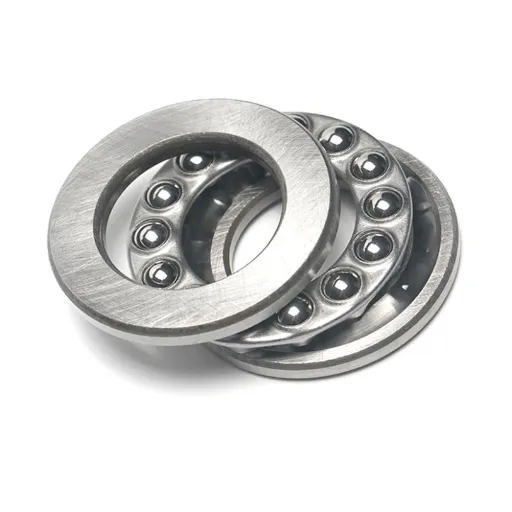
Summary of Key Findings
When choosing a suitable brand for operational requirements, a number of aspects come into play as considerations. First of all, one must thoroughly understand load requirements such that the equipment remains durable and efficiently functioning over time. Determining light applications or heavy applications, an option with an appropriate choice for workload requirements shall mitigate wear and tear of the system and therefore prolong its lives. This leaves the stage upon which all other considerations about brand selection are built, while misjudgment in this area could lead to eventual operational inefficiencies or laydown time.
The operating conditions, such as temperature ranges, high humidity, or aggressive atmosphere, also play an important role. Brands offering cutting-edge solutions such as corrosion-resistant materials or advanced lubrication methods have a great advantage in harsh or special conditions. Another important aspect which can let the brand provide a solution to a variety of operational needs and the ever-changing need for that operational activity is its adaptability or versatility, thus lessening replacements and frequent upgrades.
Last but not least come maintenance goals; therefore, go for brands compatible with your maintenance strategies for optimum long-run performance. That ideal is symbolized by companies such as Timken, whose major philosophies are innovation and reliability and that ease of maintenance is considered alongside robustness of design. To name just a few instances, such brands have an unbroken line of superior performances coupled with an industry-leading level of customer support and training resources and warranties. Selection of the right brand, when aligned with expectations for current and future operational growth, shall critically work for organizational success.
Final Recommendations
When choosing a brand or a product to satisfy organizational objectives, some factors need to be considered, such as immediate functionality or reputability in society. The brand value, such as innovation, reliability, and ease of maintenance, should be in tune with the operational reality and the incoming changes faced by the organization. In strong consideration of these values are customer service, guarantees, and training programs, all maintained under warranty. These will not only ensure the smooth working of day-to-day activities but will also reduce lateral risks that may arise due to system failures or inefficiencies down the long road.
Consequently, the process of work system solution must take into account also the pace at which technology moves and the adaptability features of the option considered. With the latest market data at disposal, such as from a Google search or an industry report, trends and competitor analysis become very clear. It is a great idea, though, not just to stop with phrase-based or superficial searches. A top-level, in-depth assessment of finer specifics, closely linked case studies, and user reviews provide information worth acting on, giving the organization a leg up when responding to changing demands of customers.
At the same time, the brand or platform selected must become the backbone of operational growth and sustainability. Whatever emphasis is placed upon cost, scalability, or a particular type of innovation must all find their way to the broad organizational vision. Decision-makers, with a precise toolset to gather solid information, a good evaluation method, and a long-term approach, are truly able to choose solutions that serve them today while working for them tomorrow.
Future Trends in Bearing Technology
The choice of materials, methods of manufacture, and increasing use of digital technology are big influencers affecting bearing technology. One key trend is the use of advanced materials such as ceramic and hybrid bearings-they provide increased life, heat resistance, and low friction compared to conventional steel bearings. These characteristics make them particularly valuable for high-performance applications that require efficiency and longevity-perhaps aerospace and automotive industries. Self-lubricating materials are also growing in popularity, cutting maintenance requirements, thus improving bearing life.
The other big trend involves smart bearings integrated with sensing and IoT capabilities. These smart bearings monitor temperature, vibration, and load changes affecting performance in real-time, ensuring predictive maintenance. In doing so, they minimize unplanned downtimes for industries and avert catastrophic failures that diminish productivity. Merging big data analytics with smart bearing technology thus opens the pathway to more efficient and cost-effective modalities, thereby making this a research leap for manufacturing and heavy machinery sectors.
Additive manufacturing and precision engineering have also been redefining manufacturing processes for bearings. They enable highly customized and highly complex designs while minimizing waste. Environmentally conscious manufacturing, such as making bearings from recyclable materials, and energy-saving manufacturing techniques come into the spotlight. Bearing technology, therefore, stands on an exciting horizon-a horizon promising performance with sustainability and innovation amid an industrial landscape of rapidly evolving times-borne out by continuous research and development efforts.
Frequently Asked Questions (FAQ)
Q: What are the differences between NSK and Timken bearings?
A: The main differences between NSK and Timken bearings lie in engineering focus and applications. NSK bearings are for high precision and have reliable performance in several industries; meanwhile, in terms of durability, Timken bearings often find use in heavy-duty applications. Both manufacturers provide a variety of bearings that are different in their properties to suit respective operational needs.
Q: How are NSK bearings different from SKF bearings?
A: In a comparison between NSK bearings and those of SKF, both tradenames are known for top quality and engineering. NSK bearings are of high precision and are designed and suitable for applications in which precision is very important. Conversely, SKF provides a wide variety of bearing solutions that focus more on durability and are meant to last. Evaluation of the user’s needs will determine which bearing is more appropriate.
Q: Are Timken bearings better than NTN bearings in terms of reliability?
A: Timken Bearings performances are exceptionally well under hard conditions and are, therefore, sometimes preferred for heavy-duty applications. However, NTN bearings can equally perform very reliably and do have their own engineering for specific applications. Therefore, the choice between Timken and NTN should depend on specific requirements and conditions of use.
Q: What factors should determine bearing selections?
A: Bearing selections consider factors such as carrying capacities, speed, environmental conditions, and the application in question. Knowing how bearings from companies like NSK, Timken, and SKF differ will aid you in making a choice that will maximize the bearing’s performance and hence increase the bearing’s life.
Q: Can NSK compete with Timken in terms of durability?
A: While Timken dryers in durability, NSK bearings are designed to offer reliable performance in various applications. Depending on the particular use-case, NSK can stand toe-to-toe with Timken, especially where precision is a key factor.
Q: What Intervenes in the application range of SKF bearings compared to NSK bearings?
A: SKF provides a broad range of bearing solutions, suitable in various industrial fields such as automotive, aerospace, and manufacturing. Even though NSK are equally versatile, they stand out in precision applications. It is up to the particular requirements of the application to make this decision.
Q: How to increase bearing efficiency in my machinery?
A: The bearing efficiency can be improved by selecting bearings engineered for one’s specific application, following proper lubrication routines, and assuring that the alignment is good. Maintenance and monitoring will also increase bearing life and optimize performance, whether you are using NSK, Timken, or any other brand.
Q: What advantages do I get for choosing Timken against NSK bearings?
A: Some of the advantages of choosing Timken bearings include being able to stand harsh conditions and being extremely durable, suitable for heavy applications. NSK bearings, however, are precise in their performance and designed for high-speed applications. So, the choice should be made depending on the specific need for your application.
Q: How do I know which bearing is suitable for my application?
A: You should be able to select the appropriate bearing in relation to your application in line with the conditions of loading, speed, temperature, environment, etc. Manufacturers such as NSK and Timken also provide detailed specifications and guide users in choosing bearings best suited to their needs for optimal operation and durability.
UCTH213-40J-300 with Setscrew(inch)
CNSORDERNO: Normal-duty(2)
TOGN: UCTH213-40J-300
SDI: B-R1/8
SD: 2 1/2
UCTH212-39J-300 with Setscrew(inch)
CNSORDERNO: Normal-duty(2)
TOGN: UCTH212-39J-300
SDI: B-R1/8
SD: 2 7/16
UCTH212-38J-300 with Setscrew(inch)
CNSORDERNO: Normal-duty(2)
TOGN: UCTH212-38J-300
SDI: B-R1/8
SD: 2 3/8
UCTH212-36J-300 with Setscrew(inch)
CNSORDERNO: Normal-duty(2)
TOGN: UCTH212-36J-300
SDI: B-R1/8
SD: 2 1/4
UCTH211-35J-300 with Setscrew(inch)
CNSORDERNO: Normal-duty(2)
TOGN: UCTH211-35J-300
SDI: B-R1/8
SD: 2 3/16
UCTH211-34J-300 with Setscrew(inch)
CNSORDERNO: Normal-duty(2)
TOGN: UCTH211-34J-300
SDI: B-R1/8
SD: 2 1/8









